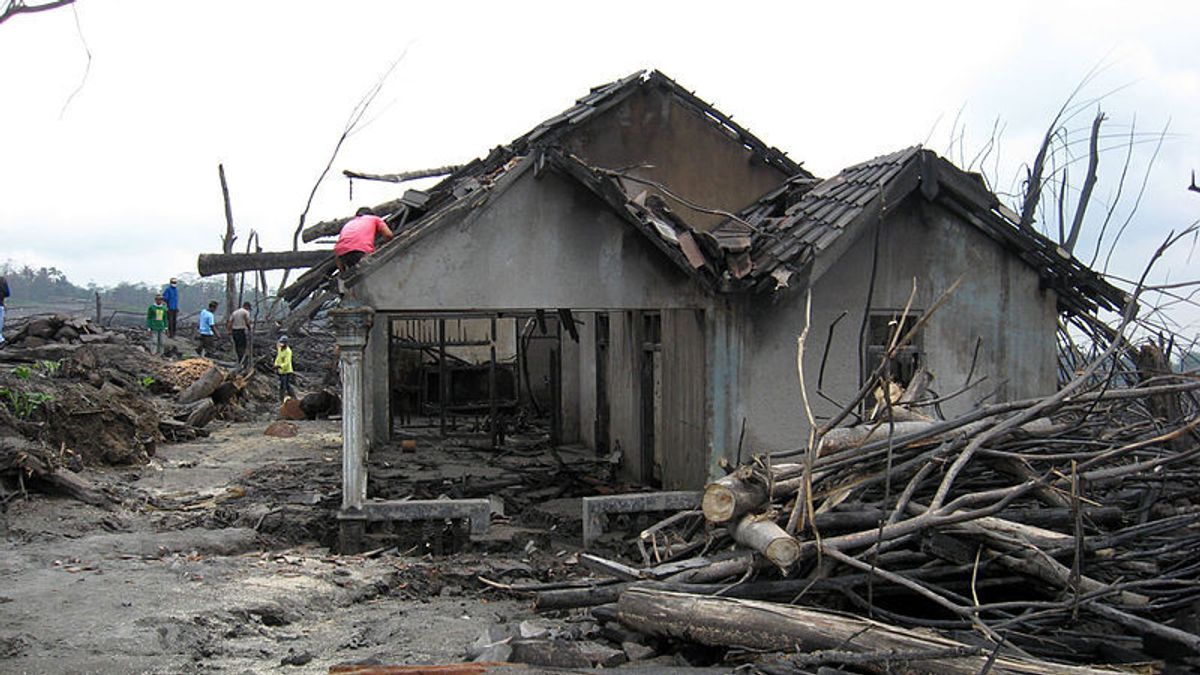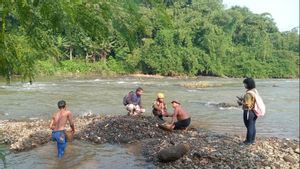
JAKARTA - On October 26, 2010, Mount Merapi entered the alert status and started its eruption. The eruption was accompanied by the release of hot clouds as high as 1.5 meters. The hot clouds point to Kaliadem, Kepuharjo. This eruption also ejected volcanic material as high as approximately 1.5 km.
Since 20 September 2010, Mount Merapi has been raised from normal to alert status by BPPTK Yogyakarta. About a month later or October 21 to be exact, the status changed from alert to alert. At that time, the residents had to be ready to be taken to the refugee camps.
Mountain activity is increasing and volcanic earthquakes continue to occur. On October 25, 2010, BPPTK Yogyakarta recommended increasing the status of Mount Merapi to alert. People living within a 10 km radius of Mount Merapi must be evacuated immediately.
The first eruption then occurred on October 26, 2010 at 17:02 WIB. There were three eruptions that ejected material. In addition, the eruption was also accompanied by hot clouds or wedhus gembel that hit Kaliadem, Kepuharjo Village, Cangkriman District, Sleman.
Wedhus gembel also passed the residence of the caretaker of Mount Merapi, Mbah Maridjan. Mbah Maridjan lives in Kinahrejo Hamlet, Cangkringan, Sleman, which is only about four kilometers from the peak of Mount Merapi. Mbah Maridjan was found dead due to a hot cloud attack that had a temperature of 600 degrees Celsius. He was found prostrate in his home.
On October 28 and 29 2010, Merapi still spewed hot clouds even though its activity was slightly reduced. However, the silence of Mount Merapi can mean two possibilities, namely that it is gathering energy or its magma has decreased. As a result of the eruption of Mount Merapi in October 2010, 353 people were reported to have died, including Mbak Maridjan.
Citing Liputan 6, the series of eruptions of Mount Merapi caused 291 houses to be damaged and one embankment in Ngepos Village collapsed due to cold lava flows. The eruption and flood of cold lava that occurred at Merapi continued until November 2010. Another strong eruption occurred on November 5, 2010. Cold lava flows also pose a threat to those who are lower after heavy rains around the peak of Merapi.
Merapi's behavior in 2010 was unusual and different from the previous eruption pattern. Launching Tirto's report, the activity of bursts of lava and hot clouds at that time was not as usual.

Lava bursts will usually form a new lava dome on the south side and serve as a protector. But at that time, Merapi just continuously spewed lava and hot clouds in various directions, accompanied by continuous eruptions.
At that time, the roar was even heard as far as Yogyakarta and Wonosobo, which are more than 50 kilometers away. The ash rain was also felt by the people of Cilacap, Tasikmalaya, Bandung, and even Bogor.
The latest news from Merapi, the Geological Disaster Technology Research and Development Center (BPPTKG), said that Mount Merapi released incandescent lava nine times on Friday, October 22.
VOI reports, according to the Head of BPPTKG Hanik Humaida, during the observation period, Mount Merapi experienced 76 avalanches with an amplitude of 3-40 mm for 13-186 seconds and two multi-phase earthquakes with an amplitude of 2-5 mm for 6-9 seconds.

In addition to unusual activities, the 2010 Mount Merapi incident also left a story about the death of Mbah Maridjan. The death of Mbah Maridjan showed his loyalty and devotion to Merapi until he died.
During the evacuation, Mbah Maridjan often refused to stay in the refugee camp. Mbah Maridjan reasoned that he adhered to the mandate given by Sultan Hamengkubuwono IX, who was assigned to guard Mount Merapi, which is known as the starter of an imaginary line from the center of the palace to the southern sea.
Mbah Maridjan's role as caretaker of Mount Merapi continues in the footsteps of his father who had already become caretaker. Mbah Maridjan He began serving as deputy caretaker in 1970. He took the new caretaker position in 1982.
After Mbah Maridjan died, the replacement for the kuncen of Mount Merapi was Mas Bekel Anom Suraksosihono, who was the son of Mbah Maridjan. The man who is called Mbah Asih has the task of conveying the status of Mount Merapi to his family and community, including urging him to be careful in carrying out activities. Mbah Asih was appointed caretaker of Mount Merapi on April 4, 2011 by Sultan Hamengkubuwono X.
*Read other information about TODAY's HISTORY or read other interesting articles from Putri Ainur Islam.
TODAY'S HISTORY MoreThe English, Chinese, Japanese, Arabic, and French versions are automatically generated by the AI. So there may still be inaccuracies in translating, please always see Indonesian as our main language. (system supported by DigitalSiber.id)








